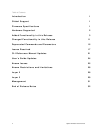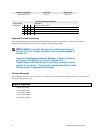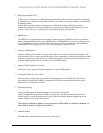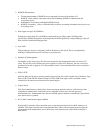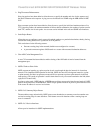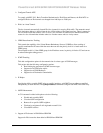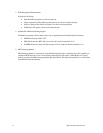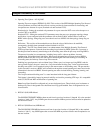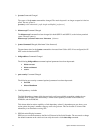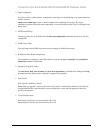
PowerConnect 6224/6224F/6224P/6248/6248P Release Notes
System Firmware Version 3.2.0.6 Page 5
¾ MLD Snooping (RFC2710)
In IPv4, Layer 2 switches can use IGMP Snooping to limit the flooding of multicast traffic by dynamically
configuring Layer 2 interfaces so that multicast traffic is forwarded to only those interfaces associated with
IP multicast address.
In IPv6, MLD snooping performs a similar function. With MLD snooping, IPv6 multicast data is
selectively forwarded to a list of ports intended to receive the data (instead of being flooded to all of the
ports in a VLAN). This list is constructed by snooping IPv6 multicast control packets.
¾ MGMD Proxy
The IGMP Proxy component has been extended to include support for MLD Proxy and is now called the
Multicast Group Membership Discovery (MGMD) Proxy. The MGMD Proxy is used to enable the system
to issue MGMD host messages on behalf of hosts that the system discovered through standard MGMD
router interfaces, thus acting as proxy to all its hosts residing on its router interfaces.
¾ Dynamic ARP Inspection
Dynamic ARP Inspection (DAI) is a security feature that rejects invalid and malicious ARP packets. The
feature prevents a class of man-in-the-middle attacks, where an unfriendly station intercepts traffic for other
stations by poisoning the ARP caches of its unsuspecting neighbors. The miscreant sends ARP requests or
responses mapping another station’s IP address to its own MAC address.
¾ Multiple LLDP Neighbors per Interface
This feature allows support for multiple neighbors on a single LLDP interface.
¾ Configurable DSCP for Voice VLAN
Allow the user to configure the voice VLAN DSCP parameter and set the DSCP value. This value is
retrieved by LLDP when the LLDPDU is transmitted (if LLDP has been enabled on the port and the
required TLV is configured for the port).
¾ CDP Interoperability
Allows the ISDP feature to interoperate with Cisco™ devices running CDP.
Industry Standard Discovery Protocol (ISDP) is a proprietary Layer 2 network protocol which inter-
operates with Cisco network equipment and is used to share information between neighboring devices
(routers, bridges, access servers, and switches).
This feature is enabled by default if using phones with CDP enabled, but should be disabled if a
Voice VLAN is manually configured on the port.
¾ SSH/SSL Refresh
The SSH update incorporates the latest security and bug fixes.




